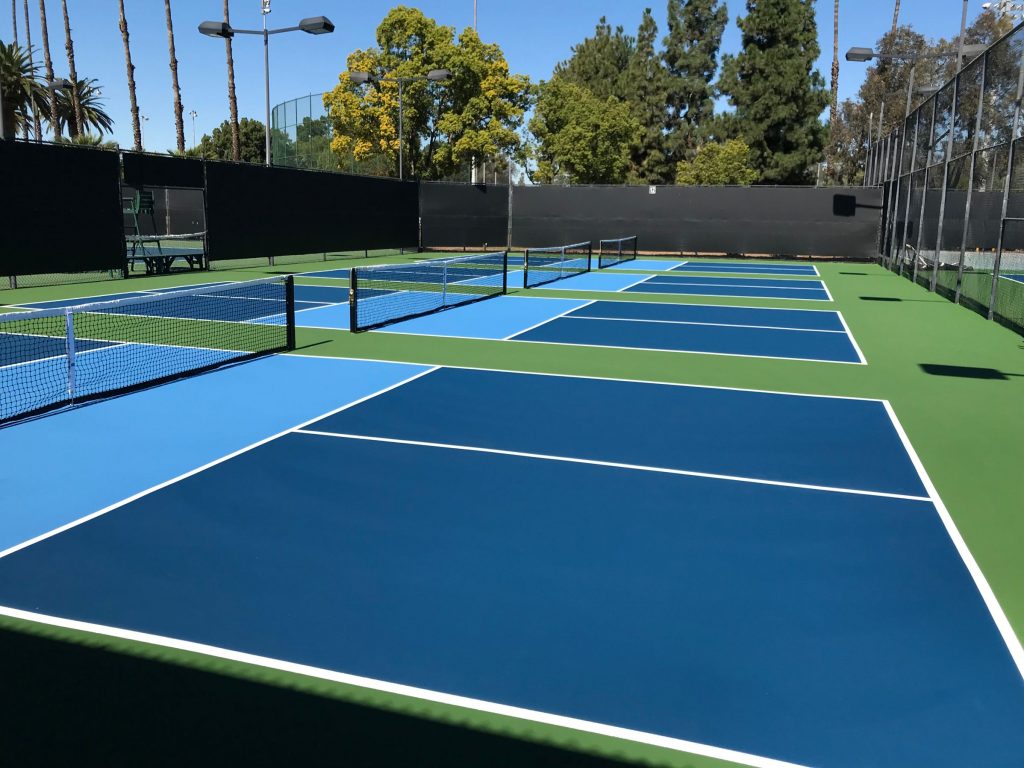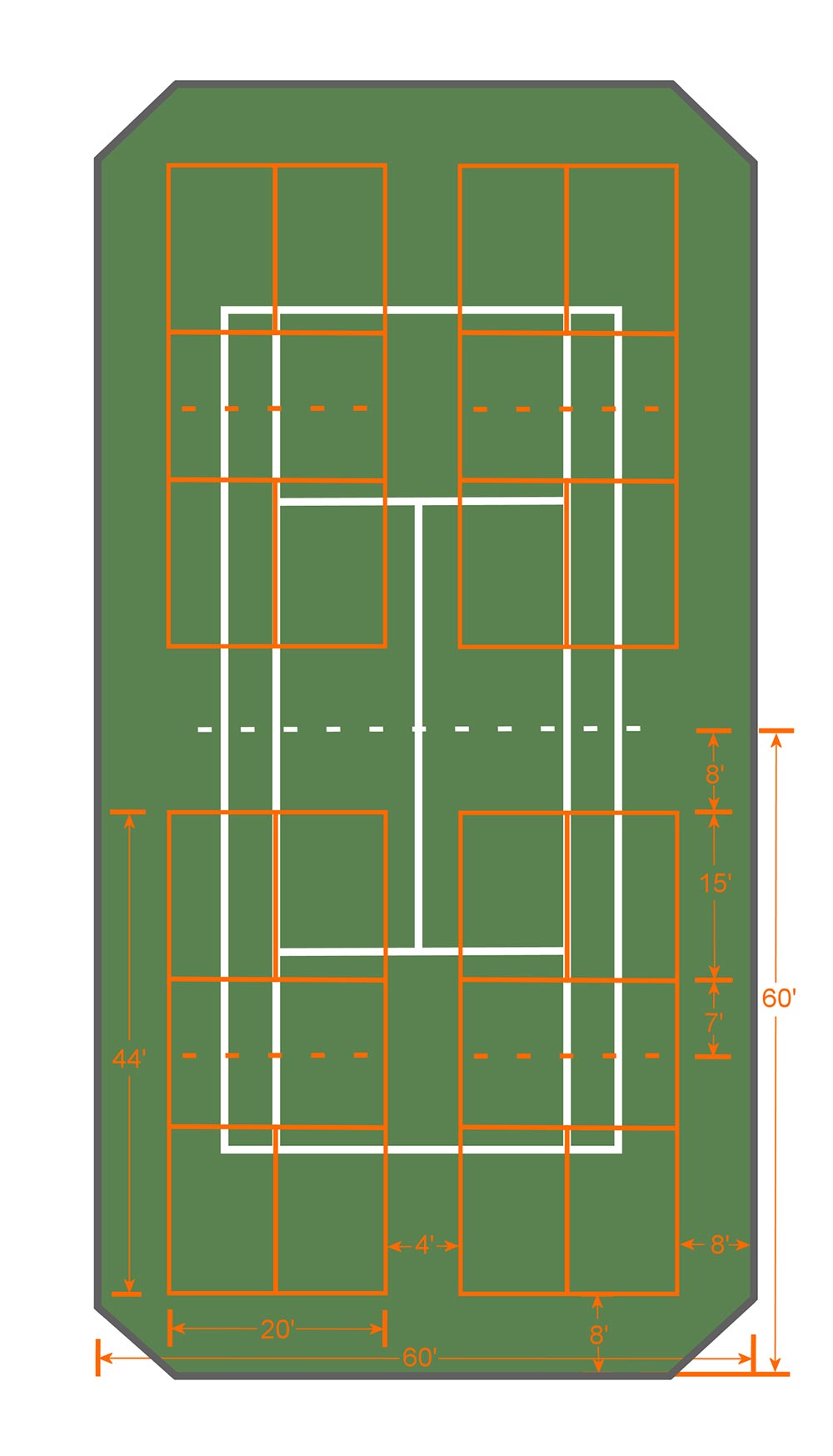What to Expect from Pickleball Judiciaries Layout & Building And Construction in Illinois and Midwest
What to Expect from Pickleball Judiciaries Layout & Building And Construction in Illinois and Midwest
Blog Article
Secret Factors in the Building And Construction of Pickleball Courts: From Website Selection to Last Finishes
The building and construction of pickleball courts encompasses an array of vital factors, beginning with the option of a proper website that balances access with environmental considerations. Crucial aspects such as court measurements, surface materials, and water drainage systems considerably influence not only the high quality of play however additionally the longevity of the center. Attention to illumination and ending up touches can elevate the general experience for gamers and viewers alike. Comprehending just how each of these parts interrelates may reveal insights that are usually neglected, triggering a better examination of finest practices in court building and construction.
Website Option Standards
When embarking on the building of pickleball courts, it is important to pin down the site selection criteria that will ensure optimal playability and access. The location must be easily obtainable for gamers, preferably located near domestic areas or area centers, to motivate involvement.
Furthermore, the surface needs to be level and stable, as unequal ground can bring about safety dangers and affect gameplay. Adequate water drainage is also important; choosing a site with excellent water drainage will help keep court conditions throughout damaging weather condition.
One more vital factor to consider is the accessibility of utilities. Accessibility to electrical power and water is necessary for lights and upkeep purposes. In addition, distance to vehicle parking facilities is crucial, helping with easy gain access to for gamers and spectators alike.
Ecological factors can not be forgotten; natural color from trees can enhance gamer convenience, while exposure to prevailing winds might interrupt play. Lastly, zoning laws and community assistance should be thought about to ensure that the job aligns with regional standards and receives the backing it requires for effective implementation. By meticulously assessing these requirements, stakeholders can develop a welcoming and functional setting for pickleball enthusiasts.
Court Dimensions and Format
To make sure optimum gameplay and adherence to regulations, the dimensions and design of pickleball courts need to be meticulously defined. A common pickleball court gauges 20 feet in size and 44 feet in length for both singles and doubles play. The recommended layout includes a non-volley zone, frequently described as the "cooking area," expanding 7 feet from the net on either side. This area is important, as it influences player positioning and shot choice - Illinois and midwest.
The net height is established at 36 inches at the sidelines and 34 inches at the facility, developing a minor dip that impacts sphere trajectory. Court markings are similarly vital; lines should be 2 inches vast and distinctive in shade to make sure exposure.
Additionally, a buffer zone bordering the court is suggested, commonly expanding 5 to 10 feet beyond the sidelines and baselines to suit gamers' motions and enhance safety and security. Proper format and dimensions not only make sure conformity with official guidelines but additionally improve the general playing experience, suiting both leisure and competitive play. Cautious preparation in these locations is critical to the effective building and construction of pickleball courts.
Surface Product Options
Choosing the best surface area product navigate here for pickleball courts is important for ensuring optimum player efficiency and security. The choice of surface can significantly impact gameplay, including round check over here bounce, traction, and player comfort.
There are numerous choices readily available, each with its unique characteristics. Asphalt is a preferred choice as a result of its longevity and low upkeep requirements. It supplies a strong playing surface area that can withstand numerous climate conditions yet may need routine resurfacing.
Concrete is one more extensively used material, using excellent durability and a smooth coating. It allows for constant round bounce yet can be hard on players' joints, making it much less preferable for long-term play without correct cushioning.
For those seeking improved convenience and shock absorption, supported acrylic surfaces present a feasible alternative. These surfaces integrate a base layer with an acrylic overcoat, providing improved traction and a softer feel, which is valuable for lowering the risk of injuries.
Finally, artificial lawn is obtaining grip, particularly for multi-purpose facilities. Its flexibility and lower maintenance requires make it an appealing alternative, though it might not give the very same ball response as conventional hard courts. Cautious consideration of these choices will guarantee an ideal playing environment.
Drainage and Lighting Considerations
Proper drainage and effective lights are crucial parts in the construction of pickleball courts, dramatically influencing both playability and safety. Adequate drainage systems prevent water accumulation, which can cause slippery surface areas and damage to the court structure. A properly designed drain strategy incorporates sloped surface areas and ideal products to help with water flow away from the playing location - Illinois and midwest. hop over to here This not only preserves the integrity of the court yet likewise reduces downtime due to inadequate weather.
Illumination is equally crucial, especially for courts planned for evening usage. Correct illumination improves presence, ensuring that players can see the round clearly and minimizing the threat of accidents. The placement of illumination components should be tactically intended to remove darkness and offer even circulation of light throughout the court. LED lights are advised for their energy effectiveness and durability, supplying intense illumination while decreasing operational expenses.

Final Finishes and Maintenance
After attending to drain and lighting factors to consider, focus turns to the final coatings and recurring maintenance of pickleball courts. Typical options consist of acrylic layers and specialized sporting activities surfaces that offer optimal grip and cushioning.

Seasonal upkeep could include resurfacing every couple of years, depending on usage and ecological factors. Correctly keeping nets, court lines, and surrounding locations is equally essential to give a safe and satisfying having fun experience. By purchasing high quality coatings and sticking to a structured maintenance timetable, facility owners can guarantee their pickleball courts continue to be in excellent condition for many years ahead.
Verdict
In conclusion, the successful construction of pickleball courts hinges on thorough interest to a number of key variables. High quality finishes and a durable upkeep schedule are essential for maintaining the court's problem, improving the overall experience for gamers and spectators alike.
Report this page